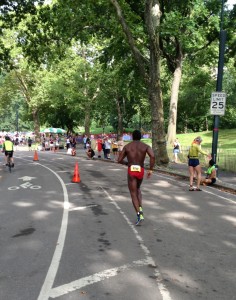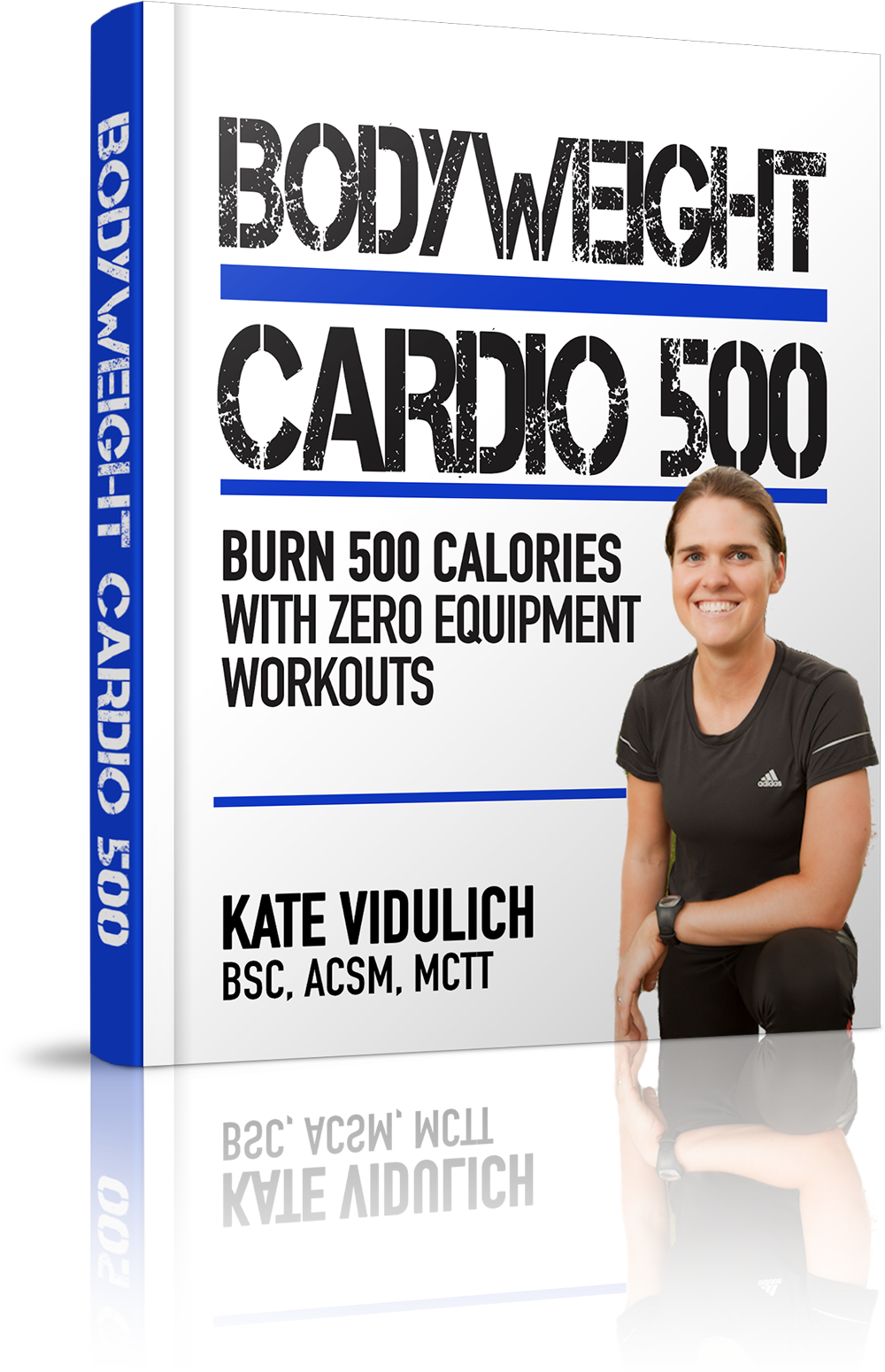Yesterday, I wandered over to Central Park to watch the NYC Triathlon. It was an awesome day for it and a lovely morning to be out cheering for my Aussie friend and long time client, Ana.
You know, I normally get a little edgy sitting on the sidelines.
But in this case – I have far more issues with the idea of swimming 1500m down the Hudson River without any protection from the surprises lurking in the water…
Here’s what I found most interesting about this triathlon. While watching the run leg, I couldn’t help but check out the body composition of all the athletes passing by. While there was a sprinkling of pros and fit athletes, most folks were battling to finish.
Let’s just say, while watching I didn’t see too many with six pack abs or even a flat stomach – except for one muscle dude wearing ONLY a speedo… (Yes it was a scary sight for early on a Sunday morning).
How to NOT Lose Belly Fat
So how can it be possible to be overweight after triathlon training for more than twelve weeks?
Clearly, doing an endurance triathlon is NOT a way to lose fat. The number one enemy of fat loss – long, slow cardio – strikes again.
Are you really surprised?
The majority of the competitors we saw were overweight. These people coming into the finish looked half dead.
If anything, I was concerned because it was hot (90+ degrees), humid (90%+) and the bright, hot sun was blasting down.
You Did a Triathlon to Lose Weight?
I overheard a group of girls discussing how they were disappointed with the small amount of fat they lost during the training process.
And one girl – eek – she even gained weight.
My first thought was:
“You did this triathlon to try and lose fat?? Haven’t you girls been reading my super amazing blog on how to accelerate fat loss?”
Triathlon training is an example of long, slow cardio and it is NOT an effective way to lose body fat. Do not waste your time.
The event is comprised of swimming, cycling and running which makes it more physically and metabolically demanding that any other endurance events.
It deserves the utmost respect. And it’s not an appropriate training goal for someone out of shape.
I’m not having a go at these people for having a goal to complete an endurance event, but I feel too many people have a goal to compete in endurance sports with the underlying intention to lose fat.
There are certain endurance events and exercise classes that I feel you must be in good physical shape before you begin training to complete safely.
Triathlon definitely fits into this category.
Is Triathlon safe?
So I pose this question: how safe is it to be totally out of shape and start training for triathlon?
Well, you are more than likely to get injured.
The prevalence of preventable overuse injuries is rapidly increasing with the popularity of triathlon. The high stats reflect injury rates for elite athletes, so doesn’t that send a clear warning to amateurs?
That’s not the only concern. The safety of this particular race was questioned the year before last after two athletes died during the swim section. This is not the first time there has been fatalities.
While accidents like this are freak, I still think the risk involved is high. Experienced or not, swimming is high risk. Plus, factor in the heat and humidity of New York City on a summer morning and you have potential for disaster.
It is definitely possible to be overweight and fit to compete in triathlon. If you have a solid foundation of training and your goal is to complete an endurance event – go for it. But don’t expect fat loss.
Back to the lovely girls who attempted to lose fat doing the NYC triathlon. I have a better idea. And it will get you faster results.

How to Do Triathlon AND Lose Belly Fat
Here is my step-by-step guide on how to compete in triathlon AND lose fat at the same time:
Step 1: Training Specificity
Periodize you training and aim to lose fat first, by doing resistance training, high intensity intervals and metabolic circuits.
Not only will this be WAY more time effective for fat loss, but you will build a foundation of strength and be less likely to suffer an overuse injury when you commence the endurance training program.
Step 2: Dial in your nutrition
Competing in endurance events does not mean you can go to town at the rice/pasta/bagel bar and get away with it. These types of carbs are only good in moderation, and for immediate recovery (like 15 minutes post 60+ minutes workouts), when your metabolism is pumping and muscles will absorb glycogen quickly.
But there has to be a limit. Carb loading is NOT for the amateur athlete. Stay away from processed energy bars/gels/drinks. These are loaded with fructose and other nasties that will upset your stomach. And let’s face it – while these snacks might be convenient, its not real food.
Step 3: Skip the Alcohol
Booze and lose. Listen, keep your intake minimal. The main issue is dehydration. If you get dehydrated, it’s game over. You’re at increased risk for musculoskeletal injuries like muscle pulls, muscle strains, cramps and it will only get worse from here. Trust me, it happens.
Your performance is decreased and ability to metabolize fat is shut down. Add in the heat and humidity of Summer and it’s a ticking time bomb.
And it’s not a choice post race beverage either. I saw a dude walking around the finish area drinking Bud Light at 9:30am yesterday after completing the race. Now that’s hardcore, even by Aussie standards…
Instead of thinking “lose fat doing a triathlon” consider “fat loss first and then attempt a triathlon.”
Your body will have a higher capacity for the volume of training, intensity of conditioning, and reduce your risk of overuse injury.
The utmost importance must always be placed on safety. Effective fat loss programs should never be dangerous.
Train smart. Always stay safe.
Are you a triathlon competitor? I’d love to hear your thoughts on this one. Leave me a comment in the box below this post.
Have an awesome day,
KV















